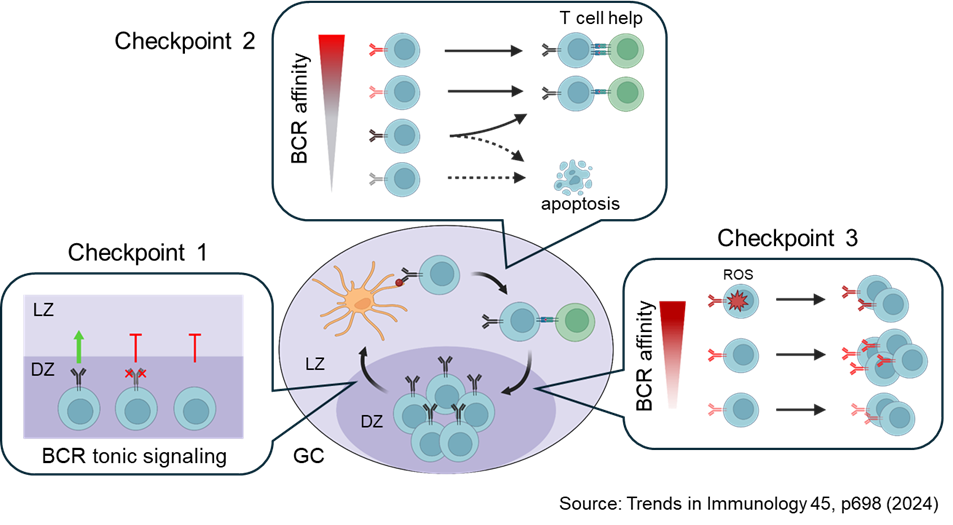分化制御研究チーム
研究紹介
When mature B cells are activated by antigen, selection of these cells takes place, particularly during T cell-dependent immune responses, by which an improved antibody repertoire is generated through somatic hypermutation in germinal centers (GCs). In this process the importance of antigen presentation by GC B cells and subsequent T follicular helper (Tfh) cell help in positive selection of GC B cells has been well appreciated. In contrast, studies of the roles of B cell receptor (BCR) signaling per se have been hampered, in part at least by the fact that the BCR has dual functions as a signal transducer and an endocytic receptor. The latter captures antigens and presents peptides from them to cognate Tfh cells that select B cells displaying higher levels of peptide-major histocompatibility (pMHC) complexes.
Hence, although genetic manipulation of the signaling component is a powerful approach to address the in vivo role of BCR signaling, such manipulations may affect both signaling and antigen presentation functions. Thus, careful interpretation is needed to define the role of BCR function alone. Taking into account these considerations, in order to examine the effects of hyper-BCR signaling on GC biology, we used a mouse model deficient in a BCR signal attenuator, Csk, since Csk ablation led to augmentation of BCR signaling with no apparent effect on antigen presentation. We show that attenuation of BCR signaling is necessary to restrain ROS-mediated apoptosis, thereby contributing to GC positive selection and subsequent affinity maturation.
This study, together with recent collaborative study with Prof. Baba’s group at Kyushu University, allows us to propose that three BCR checking points exist in GC biology.

Figure: B cell receptor (BCR) checkpoints for GC B cell positive selection
Checkpoint 1: after undergoing somatic hypermutation (SHM) in the dark zone (DZ), GC B cells with functional BCRs can transit from the DZ to the light zone (LZ) because they receive BCR tonic-like signals.
Checkpoint 2: in the LZ, antigen-induced BCR crosslinking provides a survival signal and primes LZ B cells to receive synergistic Tfh help signals.
Checkpoint 3: a strong and sustained BCR signal can induce reactive oxygen species (ROS)-mediated apoptosis in the absence of counteracting Tfh help signals.
